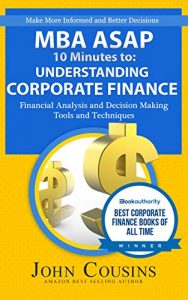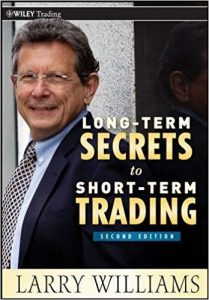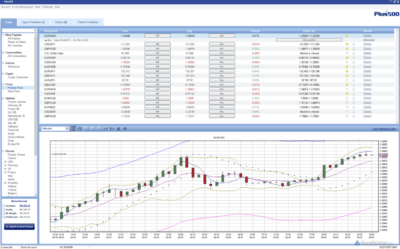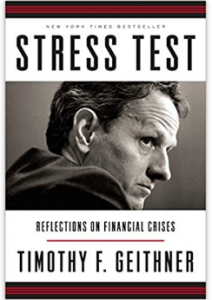Contents:

Banks could then propose these instruments to their clients as a way of “reducing” funding costs. Of course, from the clients’ point of view, quanto swaps still involve an interest rate risk and, possibly, an exchange rate risk. If the underlying yield curves shift in unexpected ways, losses may be incurred. The firm avoids any foreign exchange risk by matching the liability created by borrowing foreign currencies with the asset created by lending domestic currency, both to be repaid at the known future exchange rate.

As https://forexhistory.info/ traders know roughly how much holding a currency position will make or cost on a daily basis, specific trades are put on based on this; these are referred to as carry trades. The success of the currency swap market and the success of the Eurobond market are explicitly linked. Depending upon the terms of the CSA, the type of posted collateral that is permitted might become more or less expensive due to other extraneous market movements. Credit and funding risks still exist for collateralised trades but to a much lesser extent. The Piper Company will then pass the $150 million to swap bank that will pass it on to the British Petroleum Company who will use the funds to finance the construction of its U.S. refinery.
As discussed, cross currency swaps can be used as a hedging strategy within the forex market. If a company makes business transactions on an international level, it may experience some form of currency risk. This is when exchange rates change before converting foreign currency back into your desired currency.
Do not forget that you can reduce your risk by using leverage and other financial products. You have to be very careful when you are making a currency swap because there are many things that you will have to keep track of. You will have to keep track of the yearly LIBOR rate and the exchange rate fluctuations, among other things. In many cases, you will be required to add more capital to your currency swap if the principal amount is increasing. A swap of floating-floating currencies -A swap of floating is a general currency swap in which the currents of interests corresponding to the respective currencies exchanged are calculated according to the type of variable. A currency swap must have interest payment made in specified counterparty apart from having the final transfer of principals and interchange.

Looked at from a financial engineering perspective, the currency swap is like an exchange of two FRNs with different currencies and no credit risk. The FX swap, on the other hand, is like an exchange of two zero-coupon bonds in different currencies. Similarly, a currency swap involves the exchange of a series of payments in one currency for a series of payments in another. As mentioned earlier, the main purpose of a currency swap is to reduce exposure to risk in the forex market. It also allows you to do so without having to use leverage or any other financial instruments. This is a low-risk, low-cost way to reduce your risk exposure in the market without having to use a financial instrument, which means fewer costs.
In the world of finance, a currency swap can also be termed as a cross-currency swap. A currency swap is known to have pricing associations with different interest rate swaps, foreign exchange, in addition to FX swaps. The cost of a loan in the UK for foreigners is 10%, and for locals, it is 6%, whereas in Australia, the cost of the loan for foreigners is 9% and for locals is 5%. The market-making of XCSs is an involved process involving multiple tasks; curve construction with reference to interbank markets, individual derivative contract pricing, risk management of credit, cash and capital.
European Front-End Markets: Valuation Strikes Back
From equities, fixed income to derivatives, the CMSA certification bridges the gap from where you are now to where you want to be — a world-class capital markets analyst. These funds will likely be used to pay back domestic bondholders for each company. Interest payments go to the swap bank, which passes it on to the American company and vice versa. Currency swaps are important financial instruments used by banks, investors, and multinational corporations. Currency swaps were originally done to get around exchange controls, governmental limitations on the purchase and/or sale of currencies. Although nations with weak and/or developing economies generally use foreign exchange controls to limit speculation against their currencies, most developed economies have eliminated controls nowadays.
The Media’s Effect on Crypto – DAME Magazine
The Media’s Effect on Crypto.
Posted: Mon, 27 Feb 2023 17:17:33 GMT [source]
Company A and B would then swap their loans and pay each other’s interest obligations. A currency swap, or a cross-currency swap, is a contract between two parties to exchange interest payments and principal amounts in two different currencies at a pre-agreed rate of exchange. At the outset of the contract, the two parties exchange specific amounts of two currencies, and they then repay them according to a pre-agreed structure.
Definition and Examples of Swap Lines
Another way to approach the swap would be for both company A and company B to issue bonds at underlying rates. They would then deliver the bonds to their swap bank, who will switch them over to each other. Interest from company A will go through the swap bank that will deliver this to company B, and vice versa.

So swaps are now done most commonly to hedge long-term investments and to change the interest rate exposure of the two parties. Companies doing business abroad often use currency swaps to get more favorable loan rates in the local currency than they could if they borrowed money from a bank in that country. We keep the two floating LIBOR rates the same, but force all payments to be made in one currency only, say USD. In other words, the calculated EUR LIBOR indexed cash flows will be paid in USD.
Swaps I
However, both companies have to pay interest on the loans to their respective domestic banks in the original borrowed currency. Although Company B swapped BRL for USD, it still must satisfy its obligation to the Brazilian bank in real. As a result, both companies will incur interest payments equivalent to the other party’s cost of borrowing. This last point forms the basis of the advantages that a currency swap provides. Because swaps require little capital up front, they give fixed income traders a way to speculate on movements in interest rates while potentially avoiding the cost of long and short positions in Treasuries.
Investopedia does not include all offers available in the marketplace. Due to recent scandals and questions around its validity as a benchmark rate, LIBOR is being phased out. According to the Federal Reserve and regulators in the UK, LIBOR will be phased out by June 30, 2023, and will be replaced by the Secured Overnight Financing Rate . As part of this phase-out, LIBOR one-week and two-month USD LIBOR rates will no longer be published after December 31, 2021.
A currency swap structure enables a bank or corporate to borrow money in virtually any currency in which a liquid swap market exists, and swap this into a currency that is required. In our example the US bank was able to issue a bond that was attractive to investors. The swap mechanism also hedged the interest rate exposure on the Swiss franc note. The liability remaining for the issuer was quarterly floating rate interest on US dollars as part of the swap transaction. A Currency Swap is a swap agreement between two counterparties to exchange one FX currency for another over a specified period of time.
2023-03-01 TSXV:SURF.A Press Release Starlight U.S. … – Stockhouse
2023-03-01 TSXV:SURF.A Press Release Starlight U.S. ….
Posted: Wed, 01 Mar 2023 22:05:28 GMT [source]
A wide interest https://forexanalytics.info/ spread will mean that you will have a high Net Return on Investment , which will help you reduce your forex margins. The principal amount will be paid to the other party at the beginning of the currency swap. They are also used to speculate and, by incurring a risk, attempt to profit from rising or falling exchange rates.
The Currency Rate
Interest rate payments are usually calculated quarterly and exchanged semi-annually, although swaps can be structured as needed. Interest payments are generally not netted because they are in different currencies. A currency swap involves the exchange of interest—and sometimes of principal—in one currency for the same in another currency. Let’s say that the Japanese party is looking to borrow US$100 million and, in turn, lends ¥50 million to the American party. This is a spot exchange rate of US$2 per JPY, which is indexed to the London Inter-bank Offered Rate when the contract begins.
This is an agreement between a buyer and seller to trade a financial instrument at a specified price at some point in the future. Forward contracts are a type of derivative product, similar to futures and options. However, forward trading also does not deal with interest rate risk, and can only be used to hedge the risk of changing foreign exchange rates and the principal repayment of a loan. Therefore, forwards and FX futures do not cover all aspects of currency risk, which explains the attraction to investors of a cross currency swap.
The “swap rate” is the fixed interest rate that the receiver demands in exchange for the uncertainty of having to pay the short-term LIBOR rate over time. At any given time, the market’s forecast of what LIBOR will be in the future is reflected in the forward LIBOR curve. The notion of a quanto instrument can be applied in other financial markets.
As the European Central Bank leaves negative policy rates behind, attractive valuations herald a much-improved total return potential. After withstanding a multitude of global challenges last year, emerging markets look poised for improvement as inflation recedes and the path of monetary policy comes into view. Get tight spreads, no hidden fees, access to 12,000 instruments and more. The following example illustrates these from the point of view of British pound and Swiss franc interest rates.

For this reason they are also used as the construction tool in creating collateralized discount curves for valuing a future cashflow in a given currency but collateralized with another currency. Given the importance of collateral to the financial system at large, cross-currency swaps are important as a hedging instrument to insure against material collateral mismatches and devaluation. In the second case, two parties agree to exchange their interest rate payments obligations on underlying loans.
https://day-trading.info/ Swap agreements are also over-the-counter products and are very similar to the Interest Rate Swaps described earlier. The main difference between a Currency Swap and an Interest Rate Swap is that the Currency Swap includes the exchange of principal value, whereas the Interest Rate Swap only involves the exchange of the difference in interest rate payments. Because the LIBOR rates at time t1 are unknown as of time t0, the currency swap is subject to slightly different risks than FX swaps of the same maturity.
U.S. GAAP hedge accounting treatment
In this way, corporations could lock into paying the prevailing fixed rate and receive payments that matched their floating-rate debt. A cross-currency swap contract involves one party borrowing one currency from another party and simultaneously lending the same value, at current spot rates, of a second currency to that party. Cross-currency swaps are used to fund foreign currency investments by financial institutions and multinational corporations. The two companies could agree to enter into a currency swap consisting of an initial capital exchange of $15m for £10m and an agreement to exchange the regular coupon payments.
- You will have to keep track of the yearly LIBOR rate and the exchange rate fluctuations, among other things.
- This way, the party that receives USD LIBOR and pays JPY LIBOR may be lowering funding costs substantially.
- These agreements were for at least six months and ensured there were no monetary crises during the pandemic.
- The counterparties agree to a set exchange rate, a set maturity, and a set schedule to pay interest and principal.
In 2013, the FX swap market was about 40 times larger than the currency swap market. According to the BIS Triennial Central Bank Survey 2013, FX swaps remained the most actively traded FX instrument in 2013 and their daily volume of £2.2 trillion accounted for 42% of all FX-related transactions. Spot FX transactions and outright forward transactions made up 37% and 12%, respectively, of FX market turnover. In comparison, currency swaps contribute only a small share of FX turnover. Currency swap turnover stood at $54 billion per day, or around 1% of the total. FX swaps remain most liquid at maturities below 1 year, but FX swap turnover has recently been growing for transactions with longer maturities.
